Taiwan’s time-honored traditions and phenomenal festivals account for a great part of the island’s charm. If you’ve lived here long enough, you’ll know that the locals pull out all the stops when it comes to celebrating their heritage – from the colorful cornucopia of candy for sale and the deafening blasts of firecrackers during the Lunar New Year to the dizzying pilgrimage processions, fabulous costumed parades, riveting drum sets, and enchanting dances and acrobatics, among a slew of other performances at the Mazu International Festival.
The Hungry Ghost Festival, or the Zhongyuan Festival, one of the most spectacular and anticipated events of the year, is no different. The Keelung Zhongyuan Festival was the first of its kind to be officially listed as a “national heritage asset” in 2008.
Last week, Taiwan Observer had the privilege of joining MyTaiwanTour on a trip to Keelung to experience their take on Ghost Festival’s Eve.

For starters, a “hungry ghost” is a spirit that has been doomed to an eternity of torturous starvation as punishment for their wickedness on Earth. Referring to them as “ghosts,” however, is considered poor form. They prefer to be called “Good Brother,” “Good Sister,” or presumably, by gender-nonconforming spirits, “Good Friend.”
The Taiwanese version of the underworld, or “diyu,” has often been compared to Dante’s nine circles of Hell. Diyu consists of 10 dians, or courts, each realm guarded by its own judicial king. Upon death, all souls descend to Diyu and are put on trial in these courts. The duration of their stay and the types of retribution inflicted upon them as they graduate from one court to the next are determined by the severity of their sins.
Not only are those who lived honorable lives exempt from punishment, they are given the option of choosing between a golden or silver bridge – the first of which takes them straight to Buddha’s paradisal kingdom, where they will be forever liberated from the shackles of mortal life, and the latter to the Jade Emperor’s realm to be crowned a deity. The excruciating journey of damned souls, on the other hand, culminates in reincarnation, specifically as vermin, beasts of burden, or humans destined to live a life rife with extreme hardship and misfortune.

Our first stop was the Grand Salvation Altar, also known as “Chu Pu/Zhu Pu Altar” (主普壇). The first permanent shrine dedicated to the celebration of Ghost Month was erected during the Japanese colonial period in 1929 in what is now Zhongsi Road, but it was relocated to its present-day location at Zhongzheng Park in 1971 to alleviate the inevitable traffic jams -both vehicular and human – that arose when the festivities rolled around.

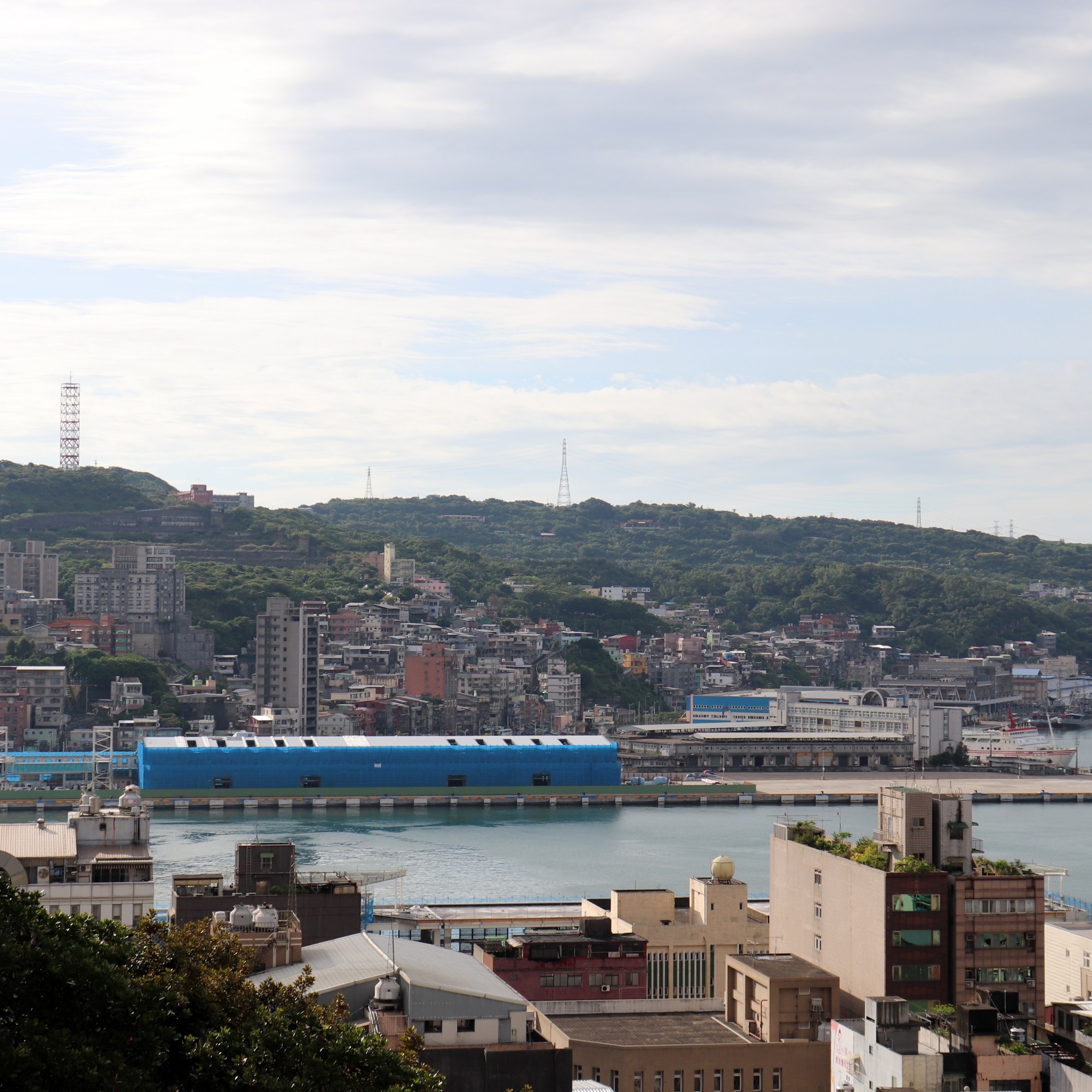
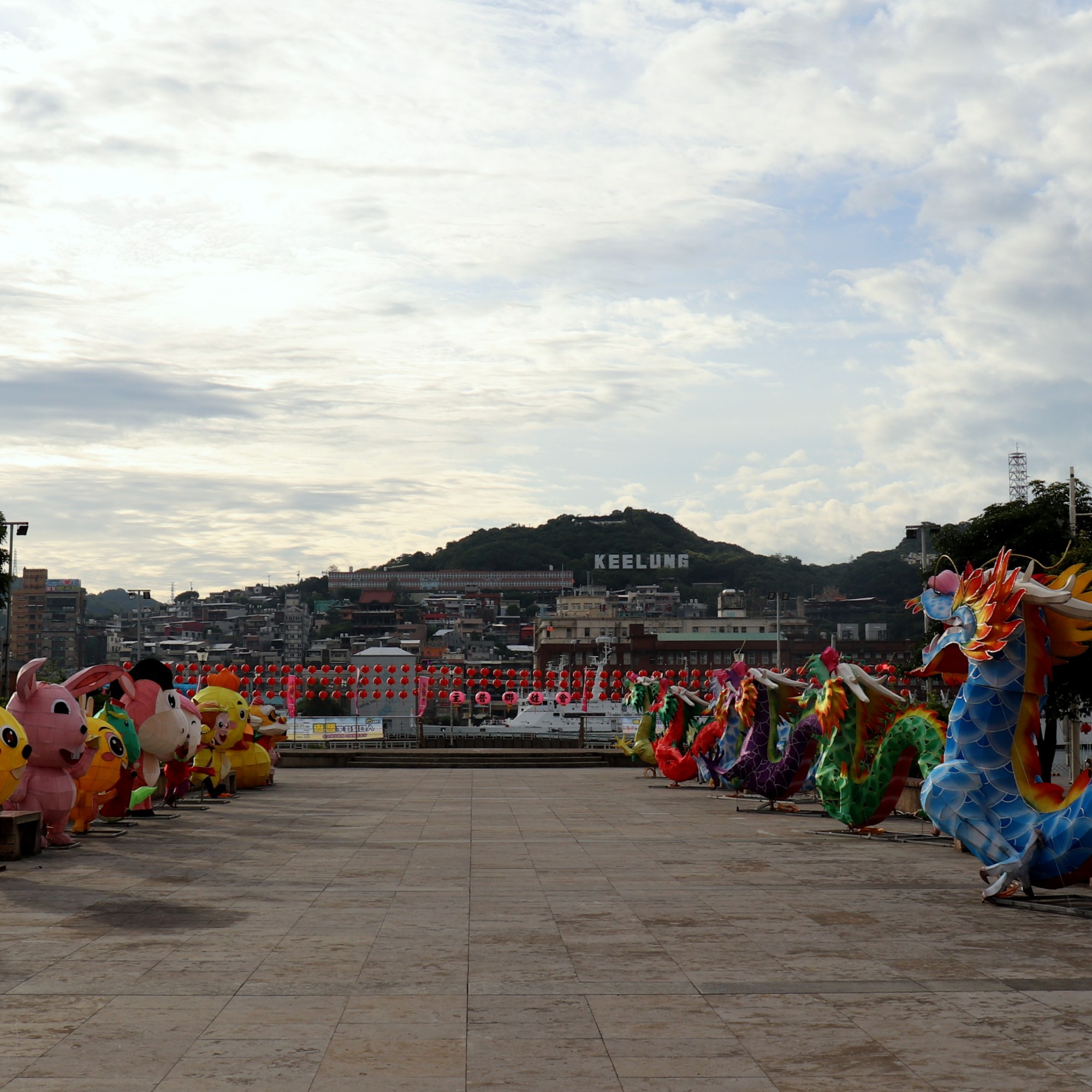
For some context, Ghost Month began on August 19th this year, the first day of the seventh lunar month. Ghost Festival’s Eve occurs on the 14th day (September 1st), and the Ghost Festival itself, celebrated on the 15th day, took place on September 2nd. The ghosts are due to be chased back to Diyu on September 16th, the first day of the eighth lunar month.
According to Buddhist lore, one of, if not the original hungry ghost was the mother of a monk named Maudgalyayana (AKA Mulian), who was sent to the underworld after her death, where she was relentlessly tormented for her excessive cursing, devouring dog meat, and various other misdeeds. He made regular food offerings to his mother, but the cursed woman’s throat had been whittled down to the width of a reed stem. What’s more, whatever she attempted to consume instantly turned into flames.

The faithful son begged Buddha for his mother’s freedom. Buddha initially repudiated his pleas, citing the magnitude of her wrongdoings, but the pair ultimately found common ground. Buddha agreed to open the gates of hell and allow the underworld’s hungry ghosts to roam the mortal world for a month. In return, the living were to perform a series of rituals and hold an extravagant feast for their ancestors and wandering souls on the 15th day. You will often find Western dishes among the food offerings in Keelung, which are laid out for the French soldiers who perished in the port city during the Sino-French War (1884-1885).


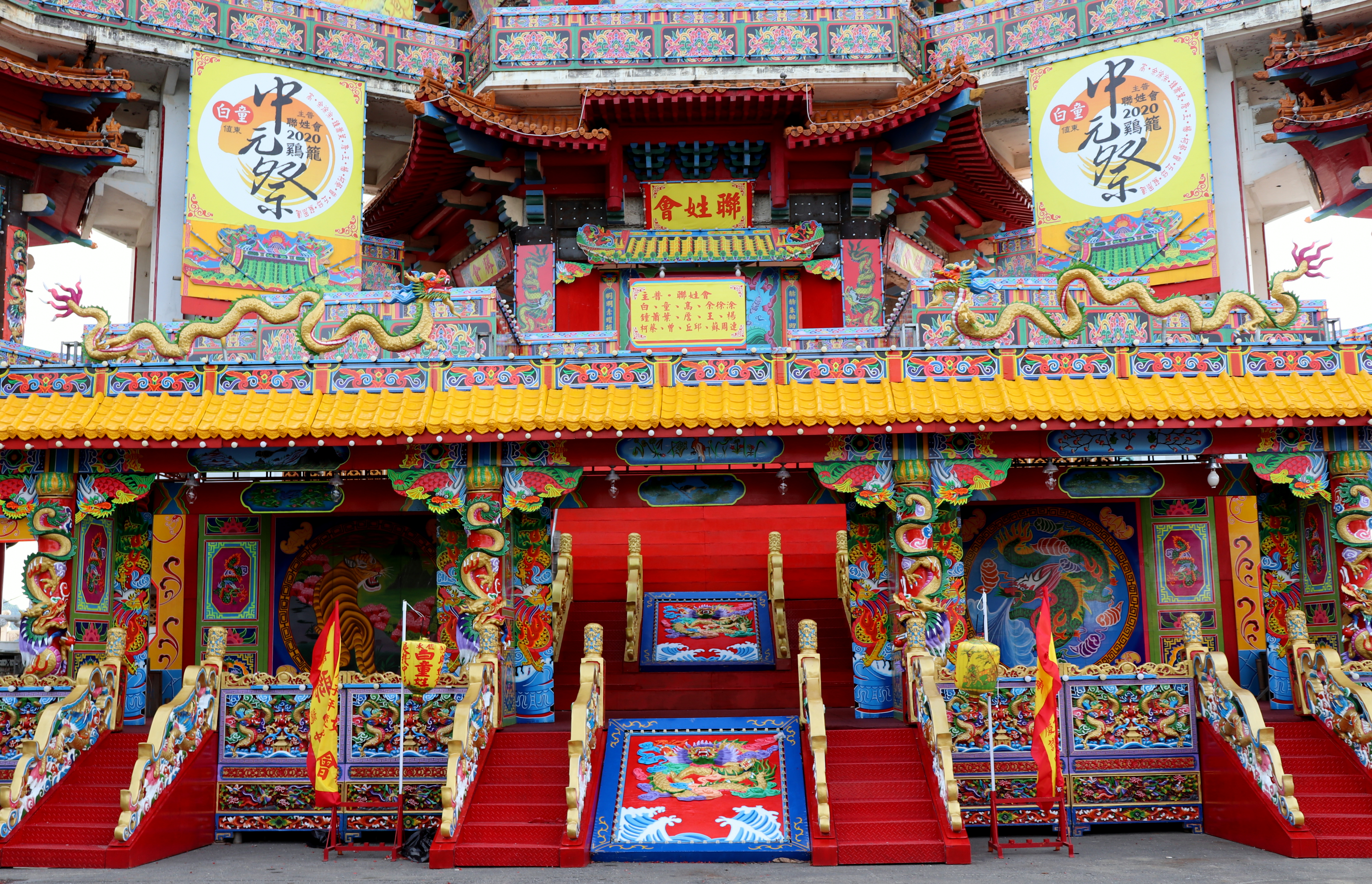
The temple, normally a regal, but plain red-and-white structure with multi-tiered golden-yellow roofs, was adorned with vibrant panels, miniature puppet stages and displays complete with beautiful hand-painted backdrops, and brightly-colored banners bearing the names of the festival sponsors. Red lanterns lined the path leading up to the altar, meant to guide the spirits to the shrine like illuminated breadcrumbs. Bonus side quest: find the hidden Totoro.

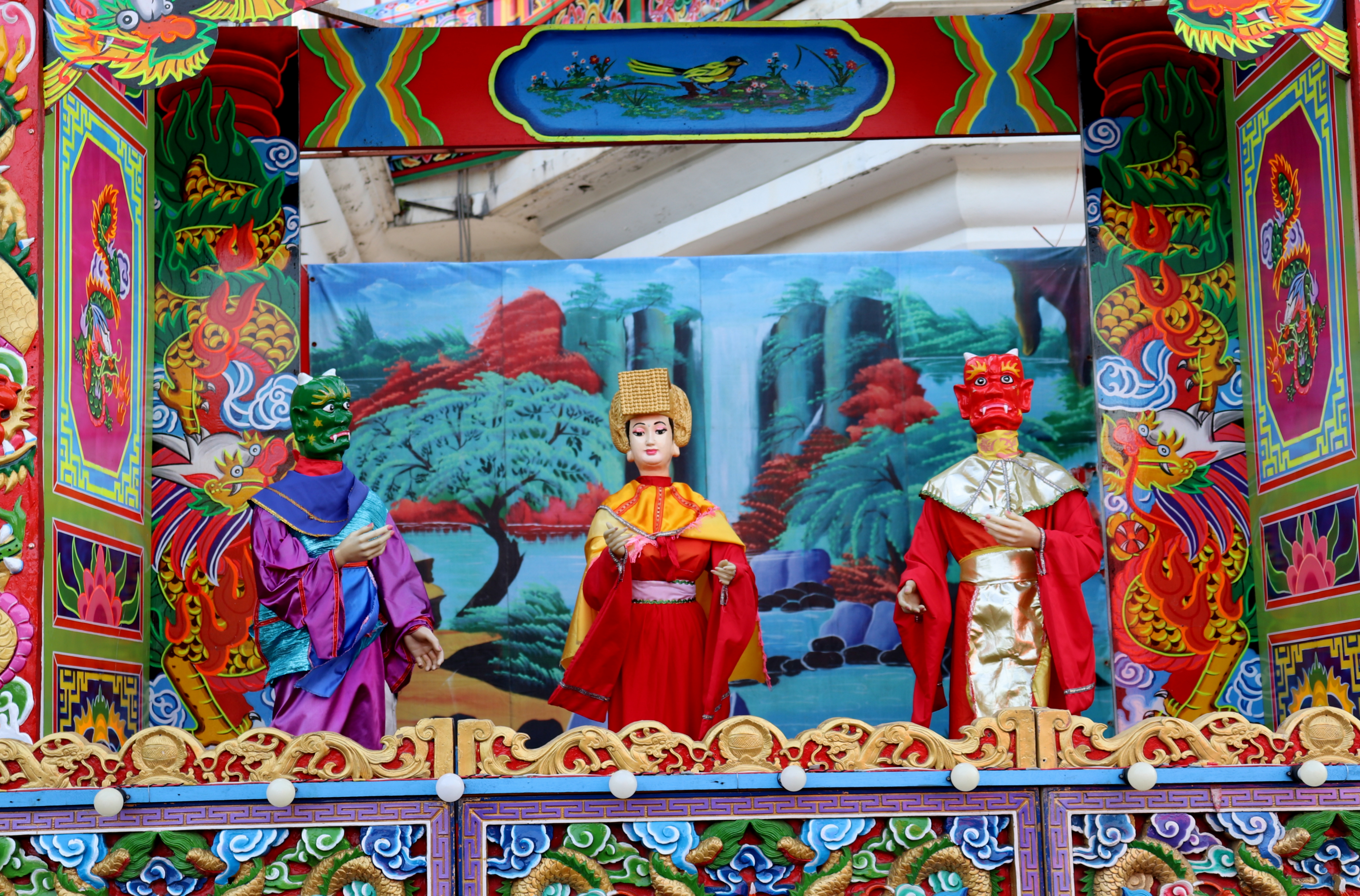
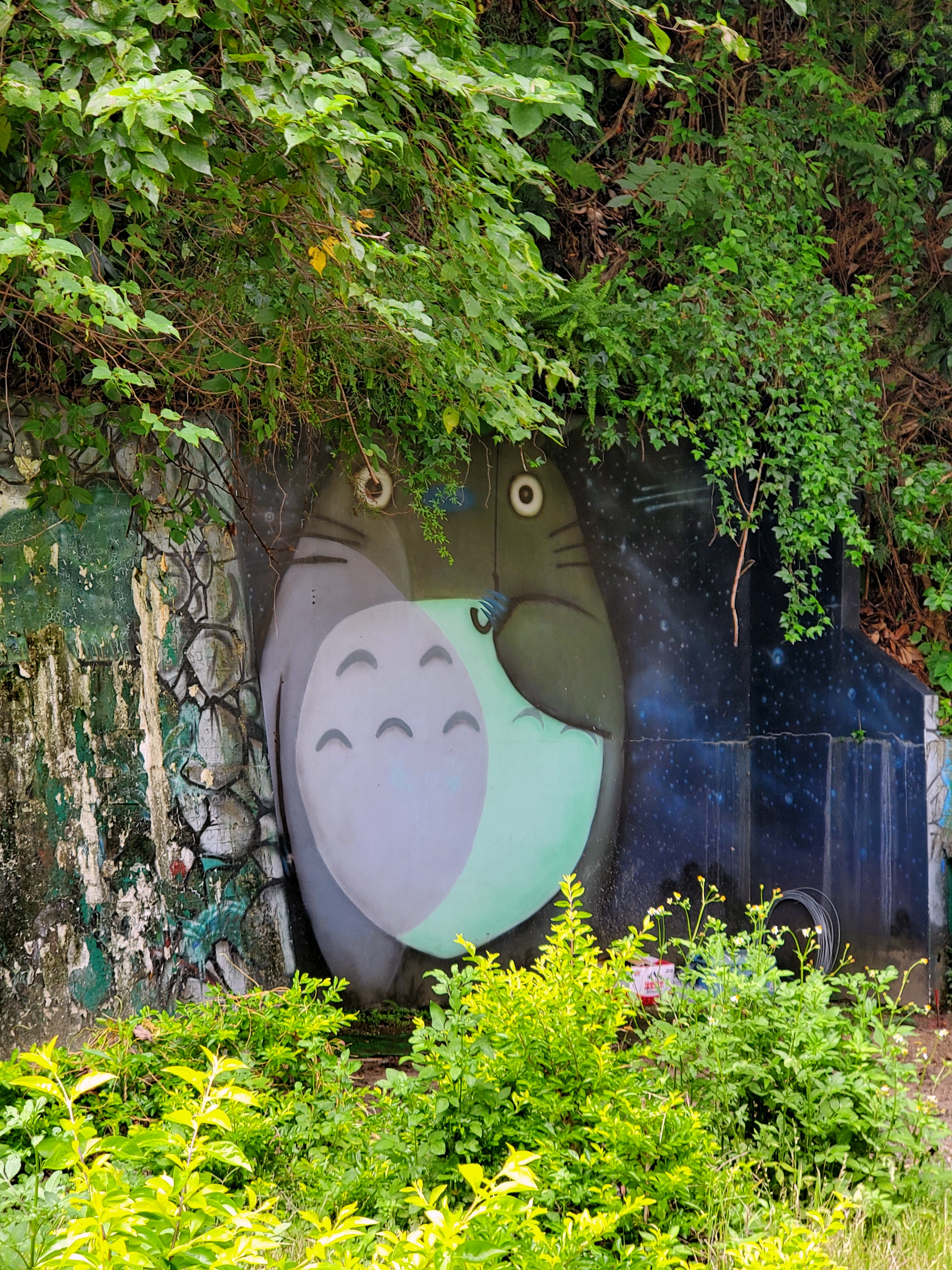
The festival is hosted and its public rites performed by one of the 15 Keelung “kinship associations” – long-established fraternities typically composed of members that share the same surname – every year. This year, the honor fell to the Lianxin (United Clan Family), who splashed out a whopping $5 million NTD for the altar’s decorations alone.
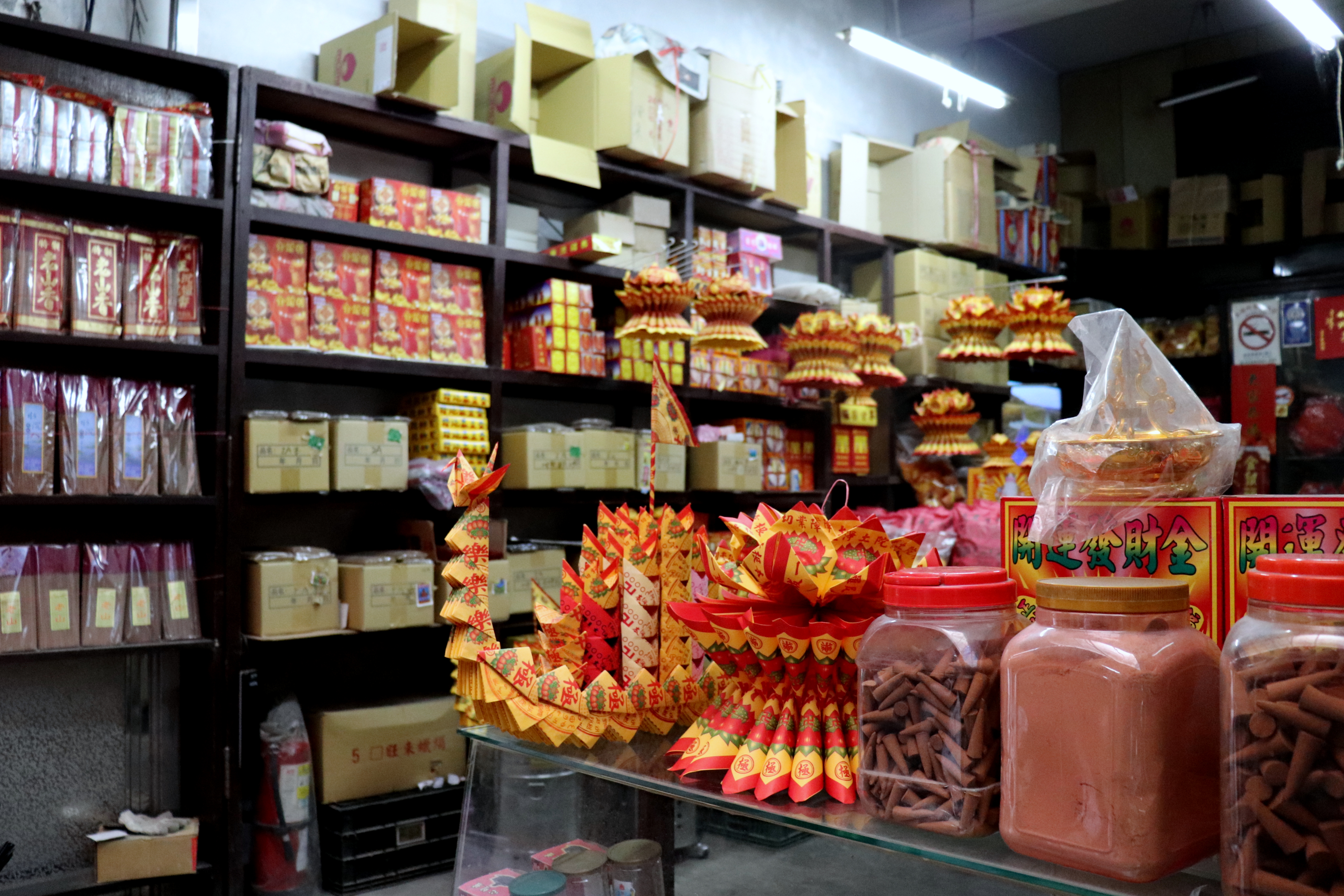
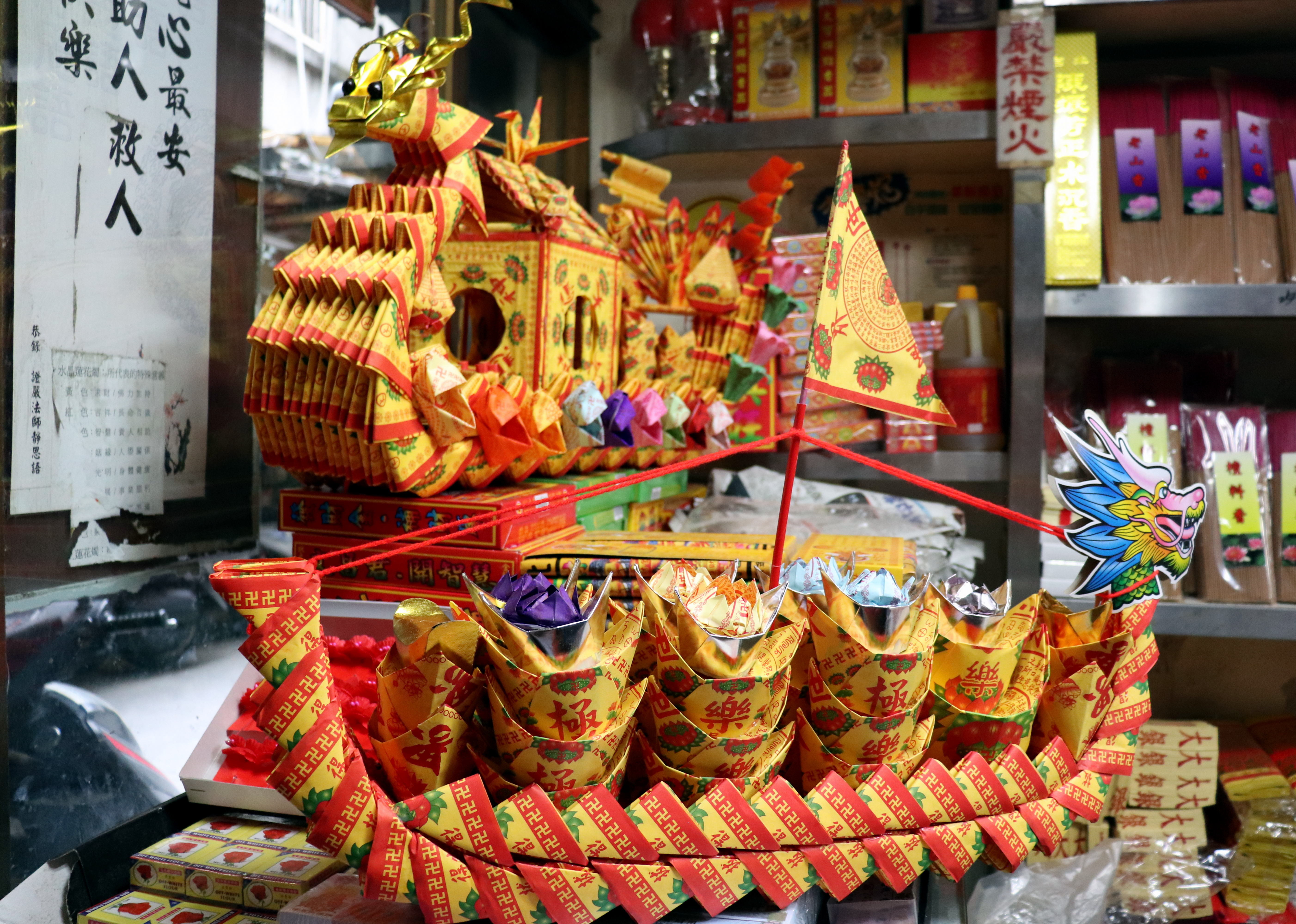
The burning of joss paper, or “spirit money,” is another integral Ghost Month ritual. Following our trip to Chu Pu Altar, we headed to one of the oldest joss paper shops in Keelung, run by a lovely lady who has been in the joss paper business for three decades. The age-old establishment is a one-stop shop for all your worshiping needs, stocked with incense sticks, candles, stacks of ghost bills available in different currencies, elaborate paper ships and lanterns fashioned out of spirit money, and even pre-packed boxes of clothes and paper cutouts of cell phones, hair and make-up kits, jewelry and other accessories, and so on.
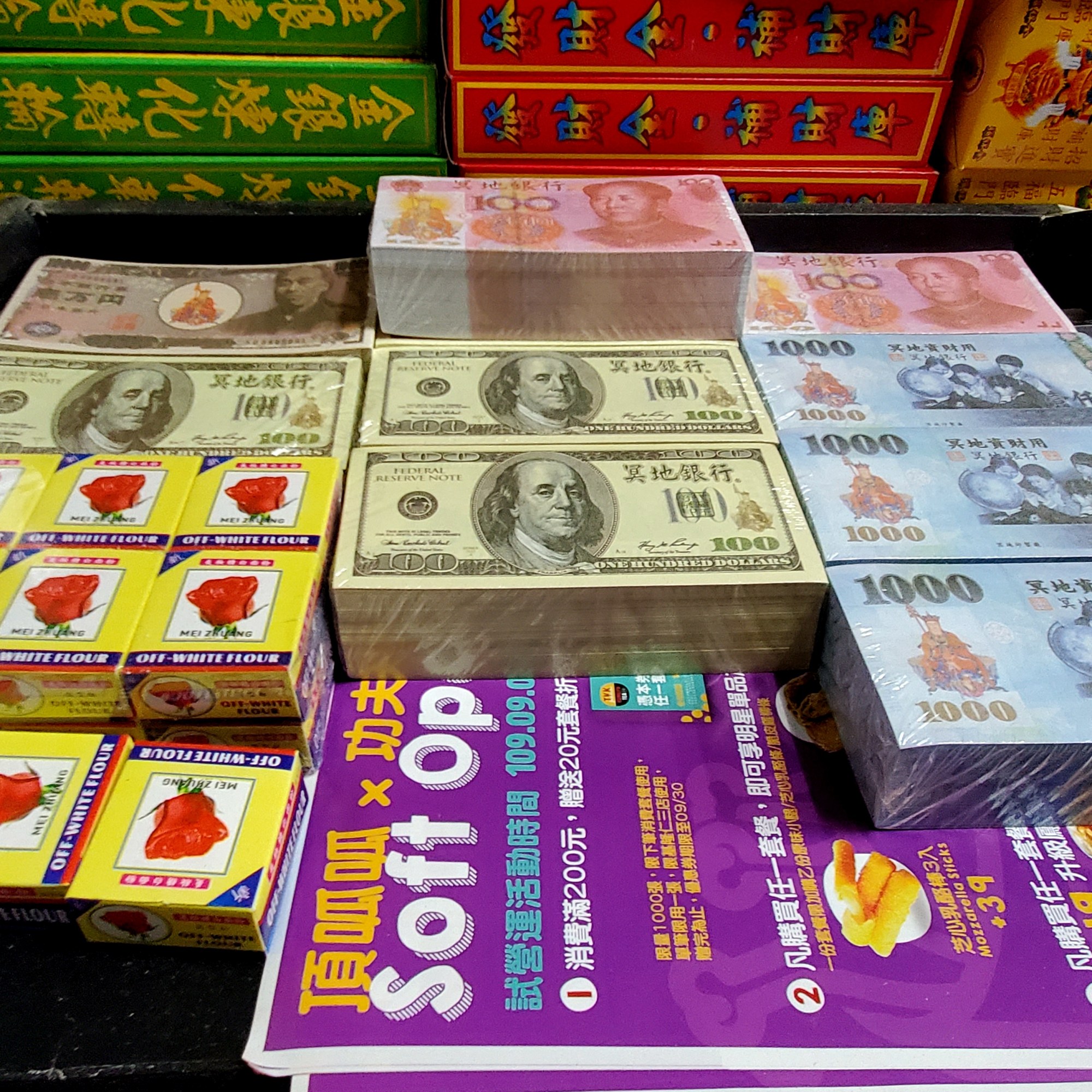
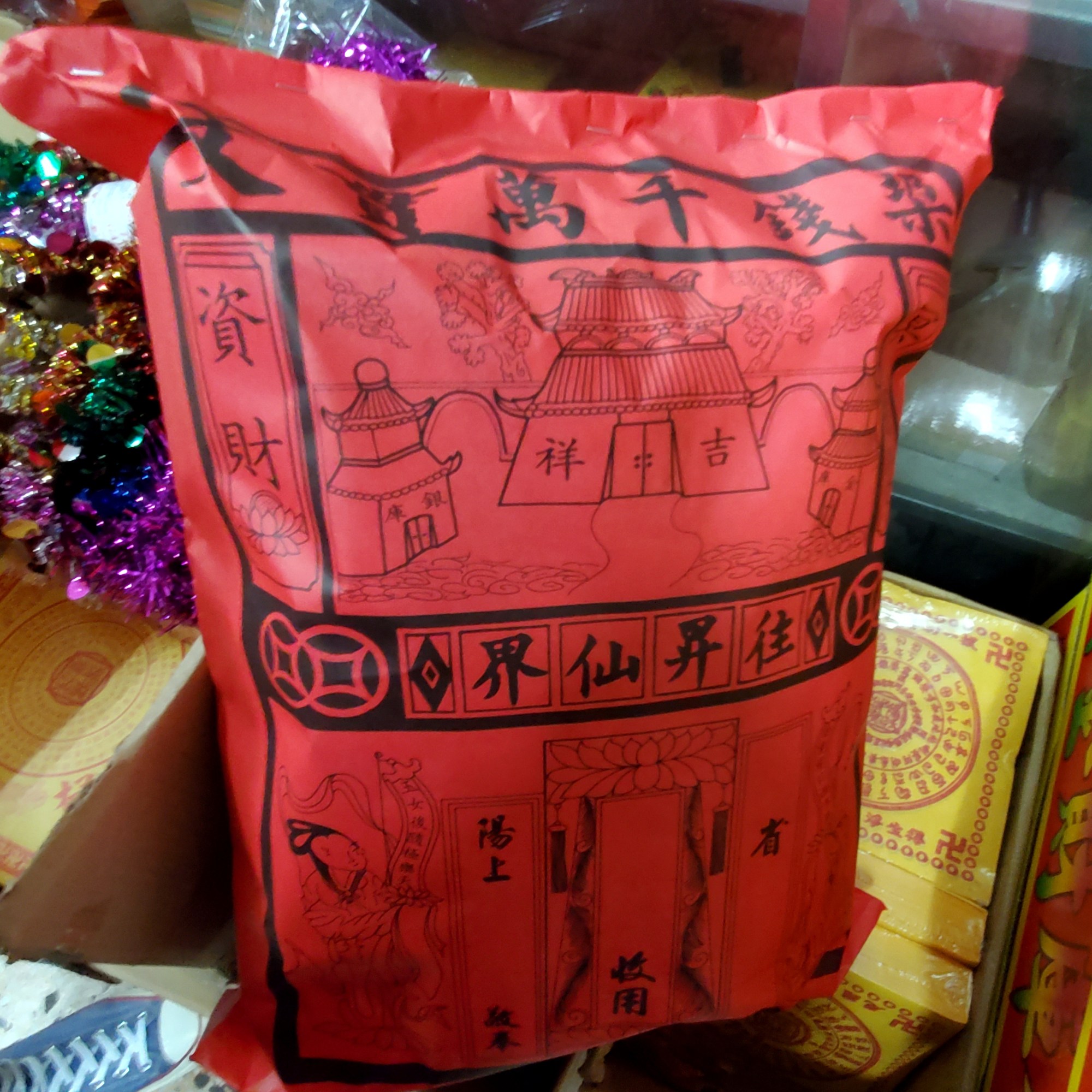

Ghost Month traditions also come with a lengthy list of taboos. Meat (mostly pork), rice, noodles, unpeeled fruits, tea, rice wines, and assortments of cookies and treats are some of the most common food offering staples. In Taiwanese culture, however, bananas, plums, and pears must never be served, as each fruit is a homonym for “greet,” “you,” and “come,” respectively, and in doing so, you are openly inviting the hungry ghosts to overstay their welcome. You will also want to delay construction projects, avoid moving into a new home, and refrain from whistling at night, lest you become a pied piper for evil spirits.
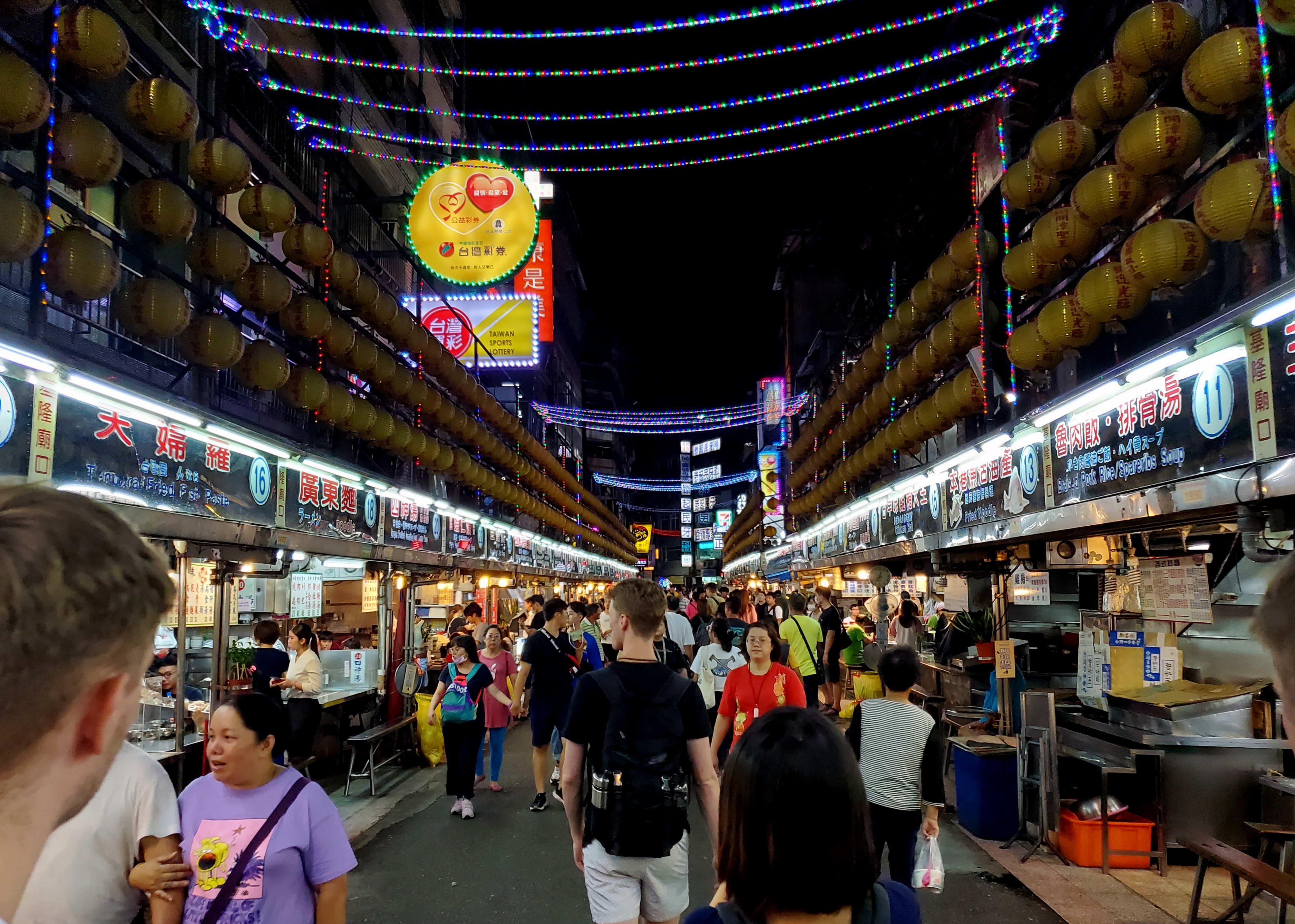
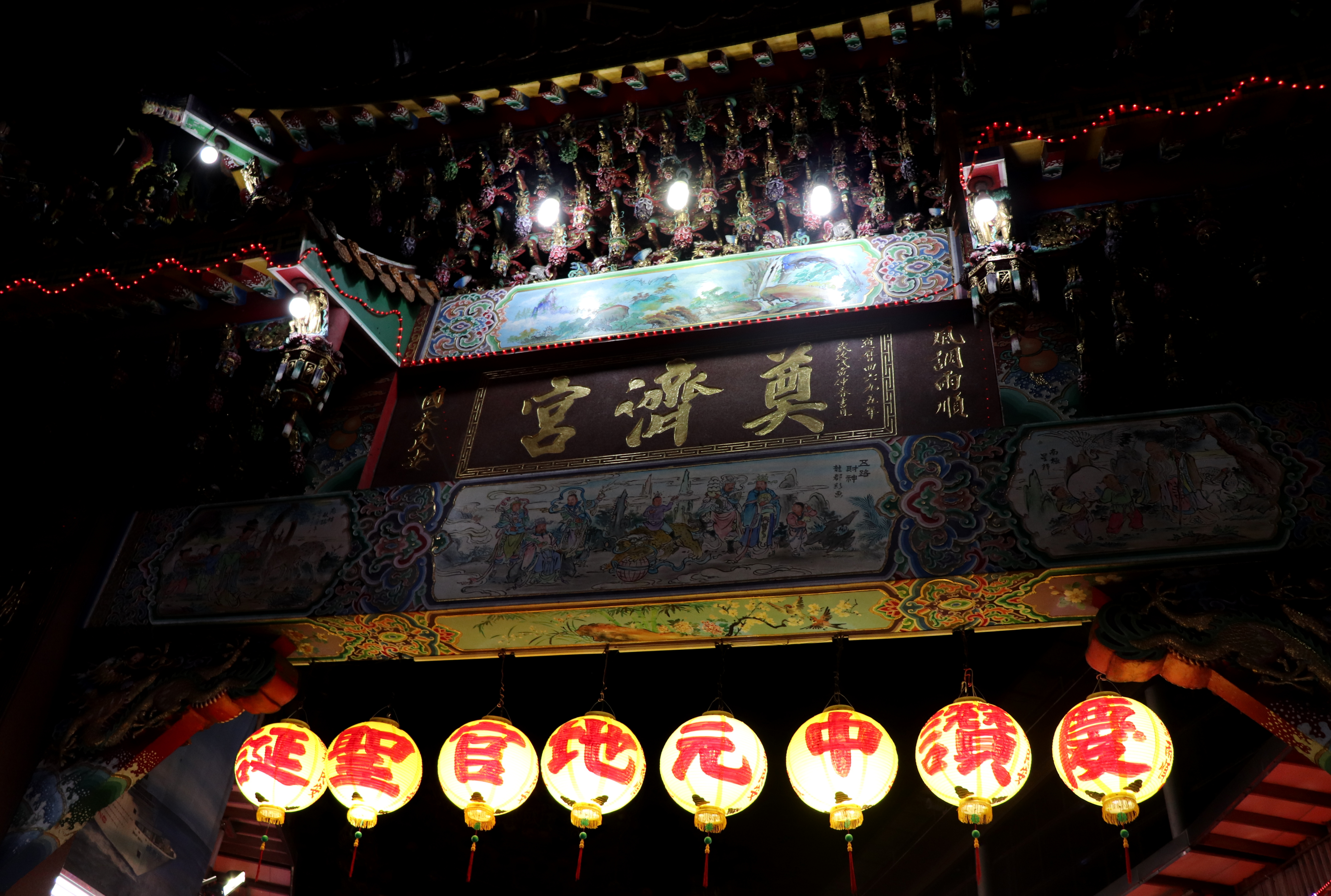

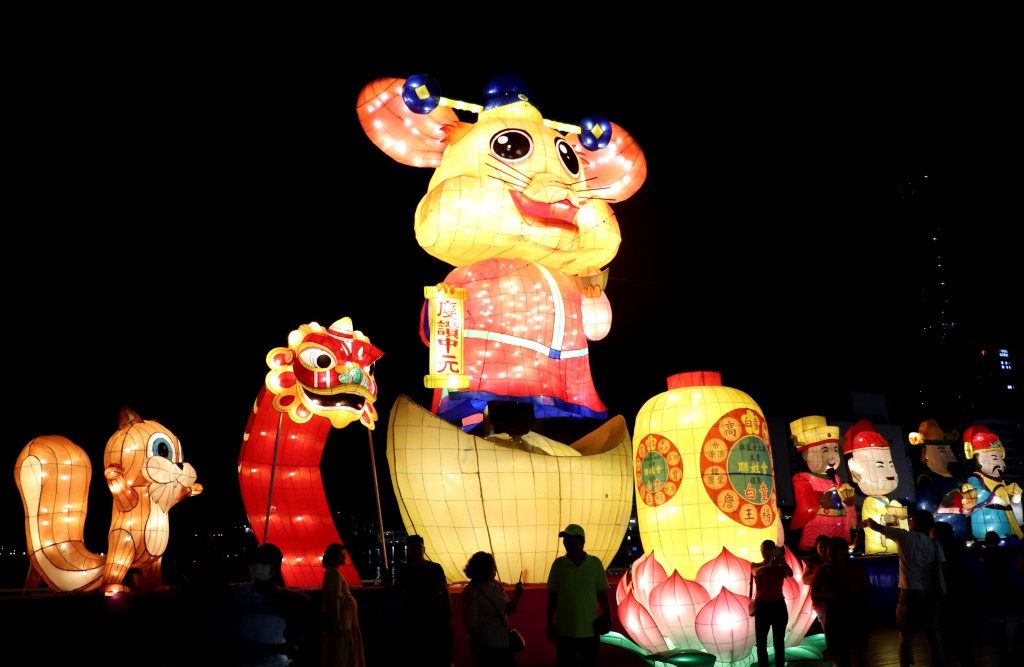
After dinner and a leisurely stroll through the night market and harbor, which was decked out with giant lanterns of animals and fabled figures and creatures from local folklore, we joined the swelling crowds on the sidewalks of the main roads for the preliminary event: the parade. Some spectators and journalists who were particularly committed to getting a good view huddled at the balconies of nearby buildings and climbed atop the roofs of underground passages. Although the parade this year was considerably downsized for COVID-related reasons, the procession of ornate floats – dressed in fresh flowers and a rainbow of LED lights, and blasting curiously lit tracks (from EDM to old pop songs) – was still a highly entertaining experience.
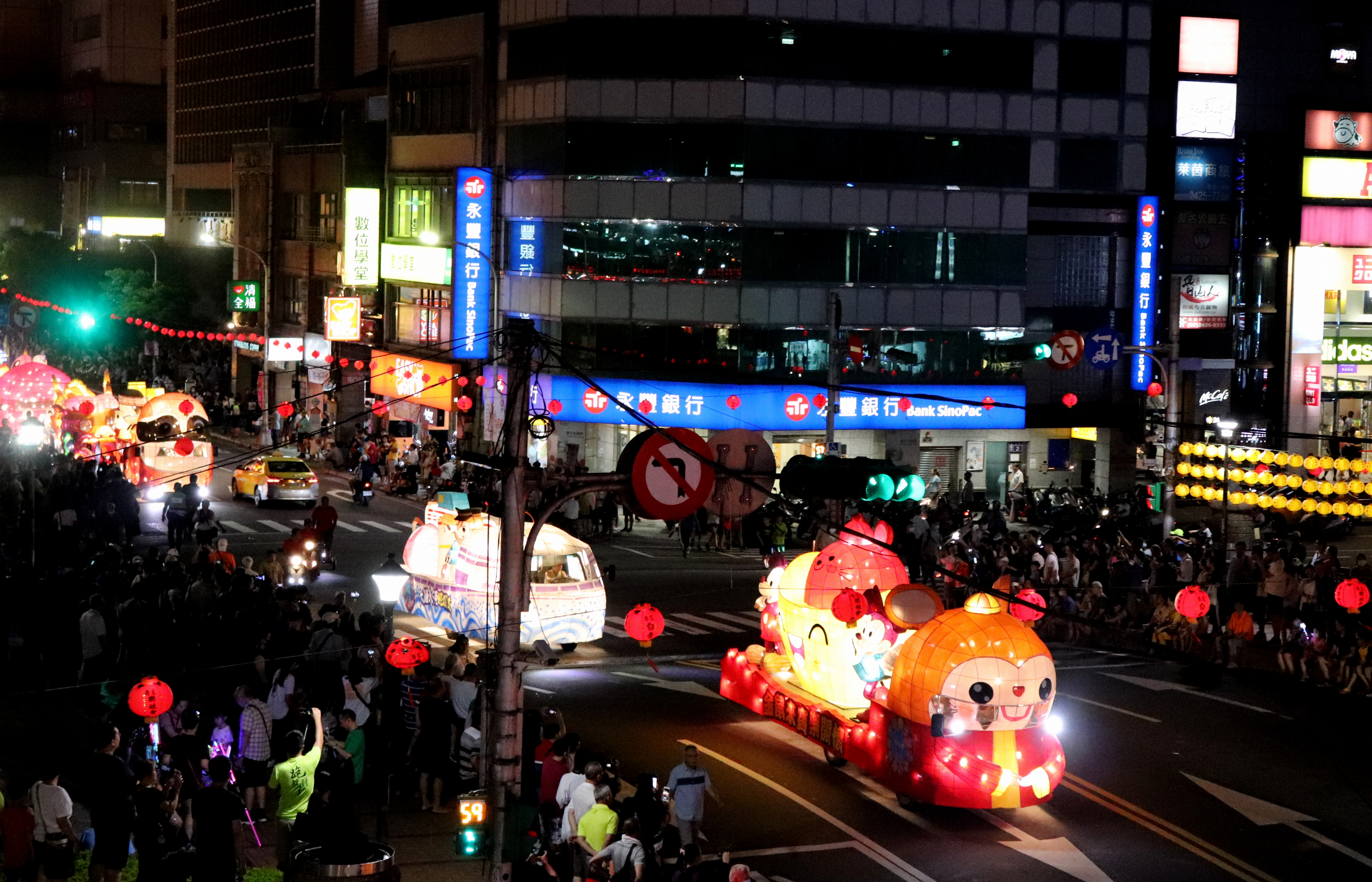
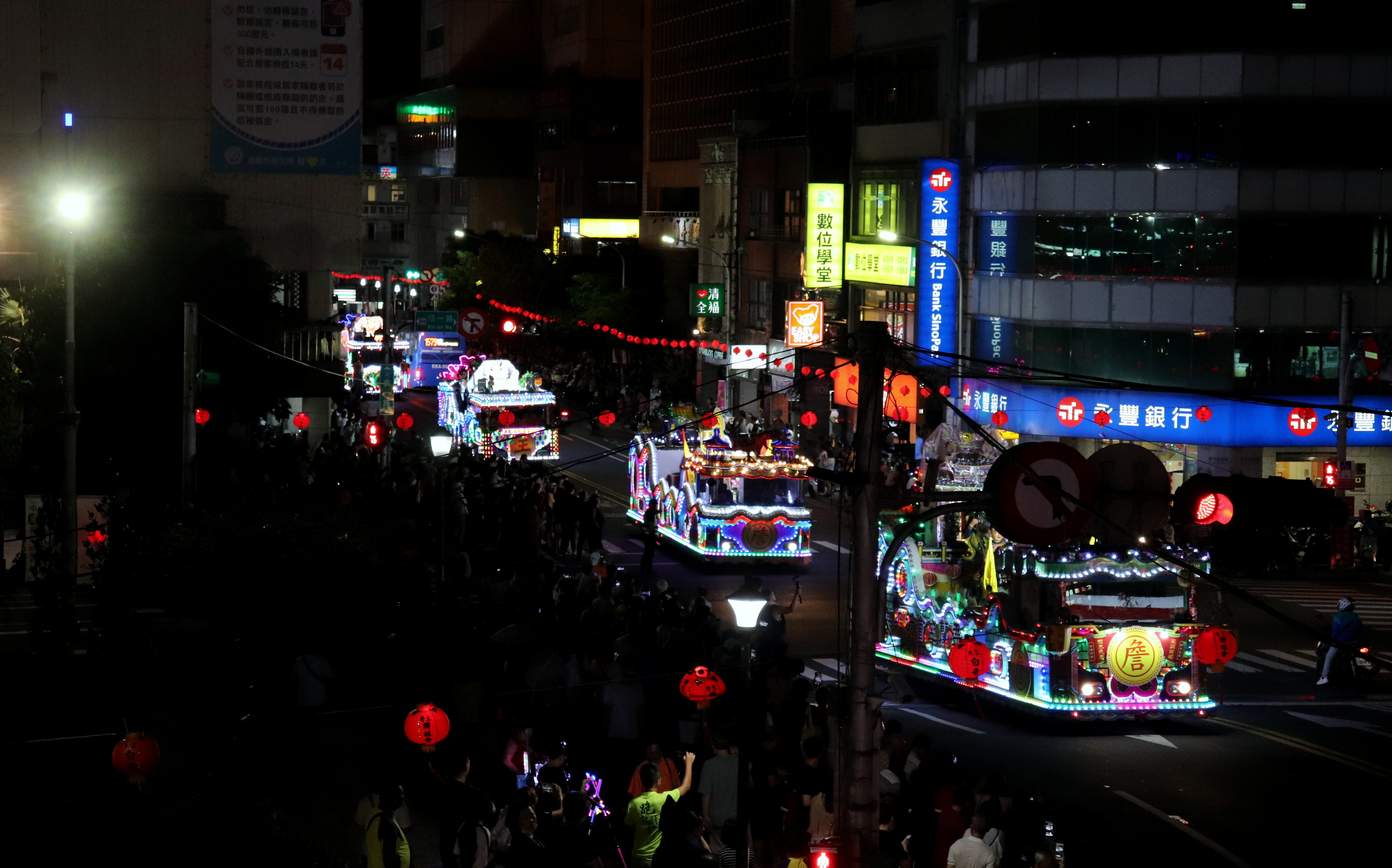
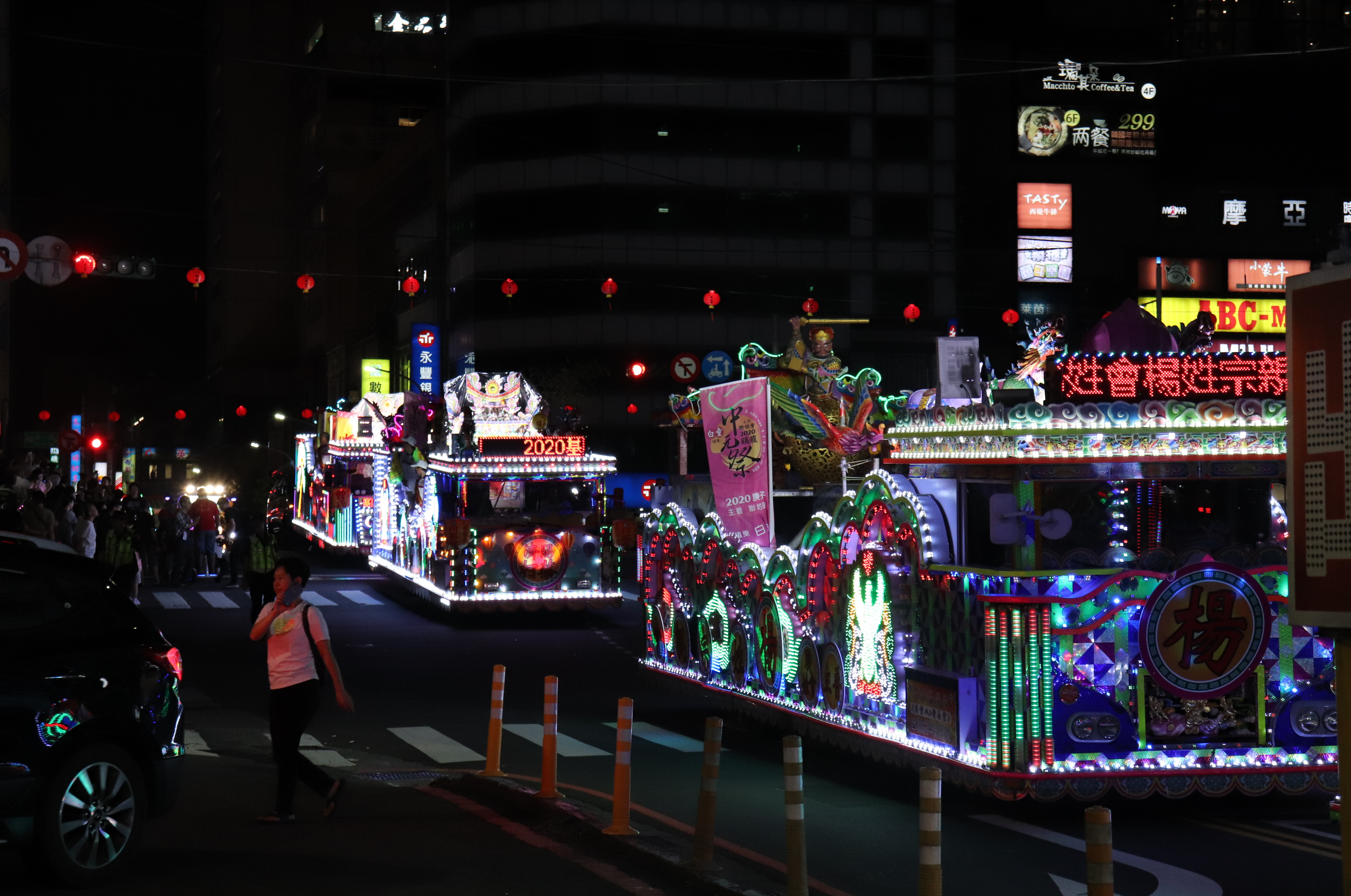

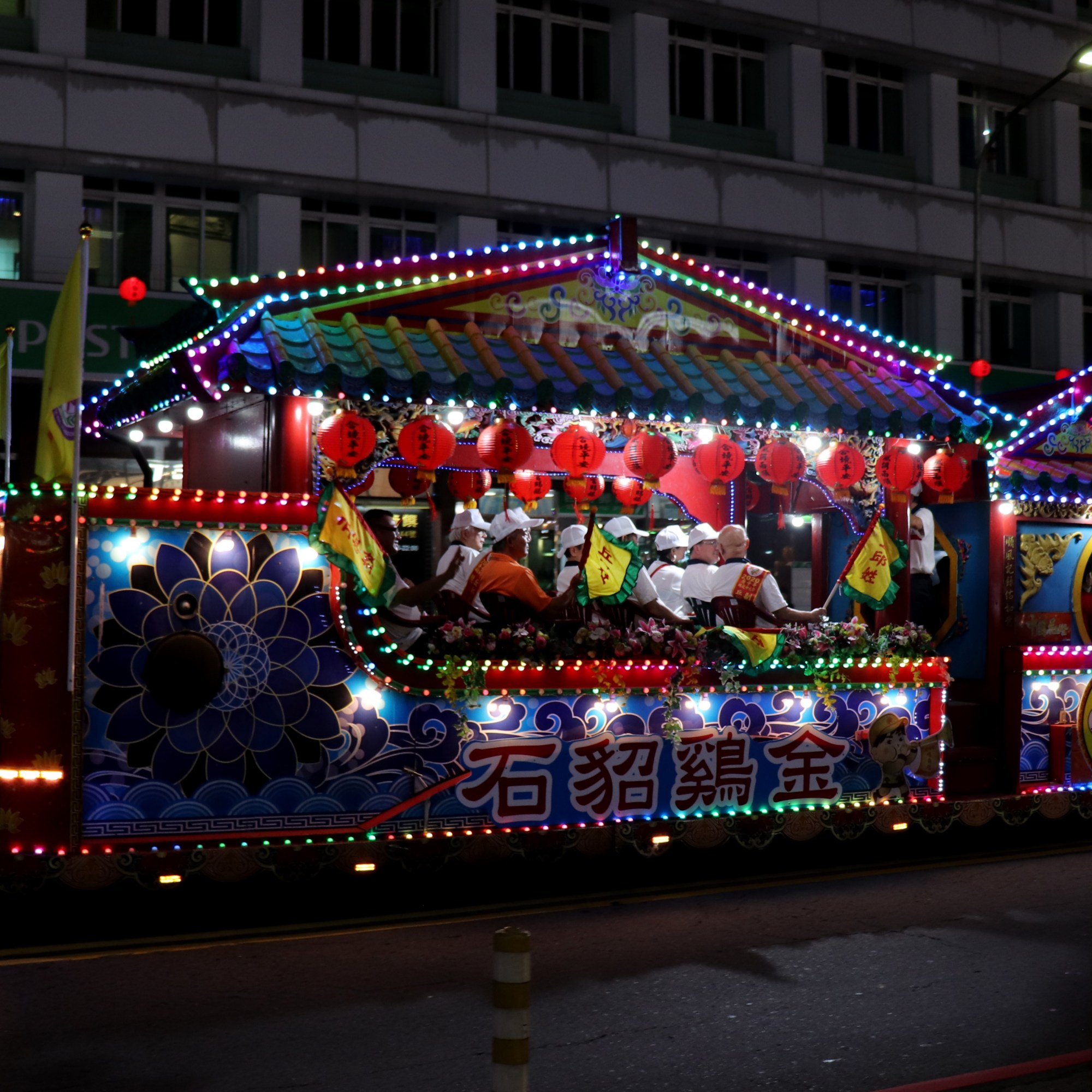

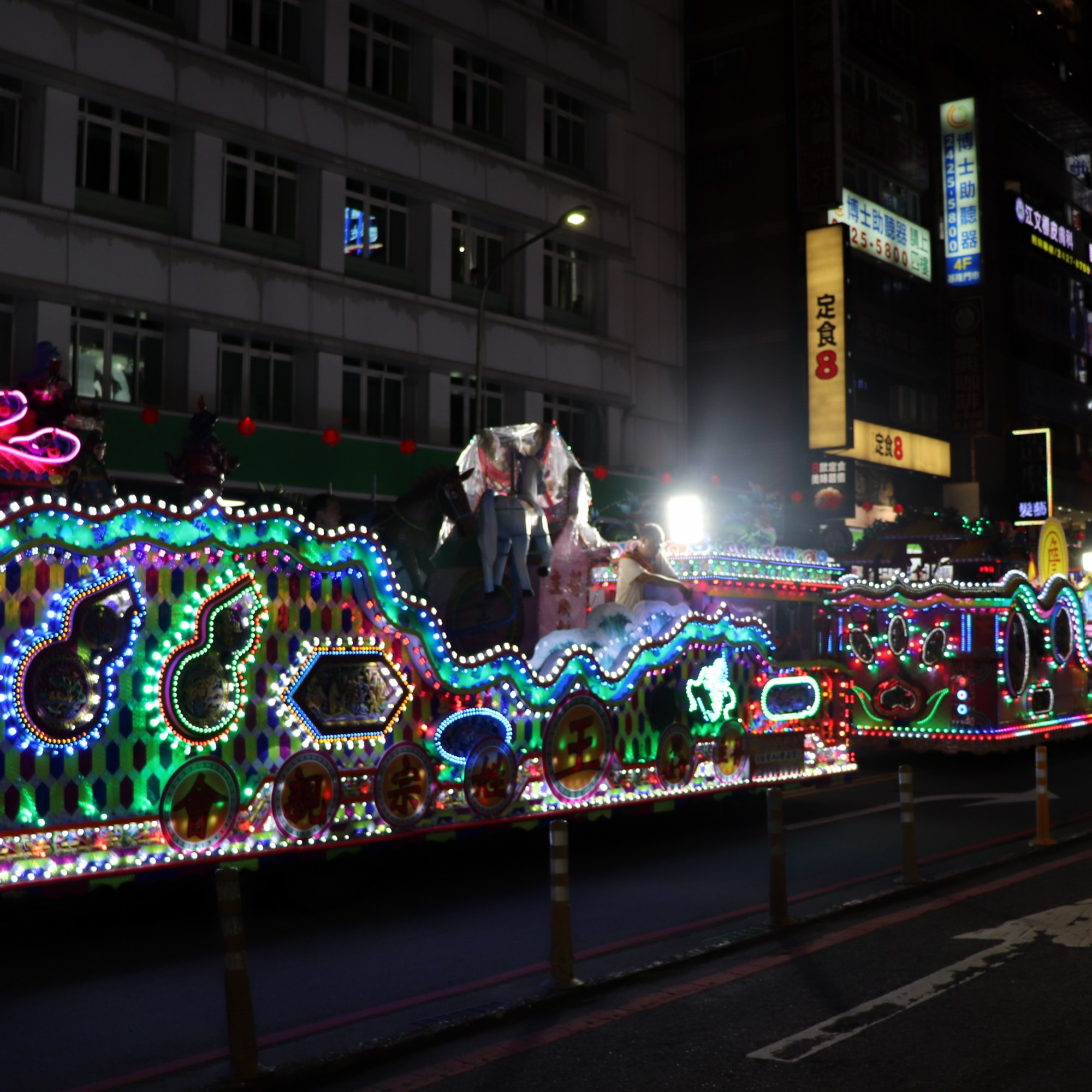
Our final stop of the night was the Badouzi fishing port. As tradition dictates, king-sized water lanterns built in the shape of old-style houses, each filled with ghost money, are set ablaze and launched onto sea. These lanterns are the living’s way to extend invitations to the underwater spirits, namely shipwreck victims and fishermen lost at sea, for the grand feast at Chu Pu Altar. These invitations are to be sent out before 11PM on Ghost Festival’s Eve.


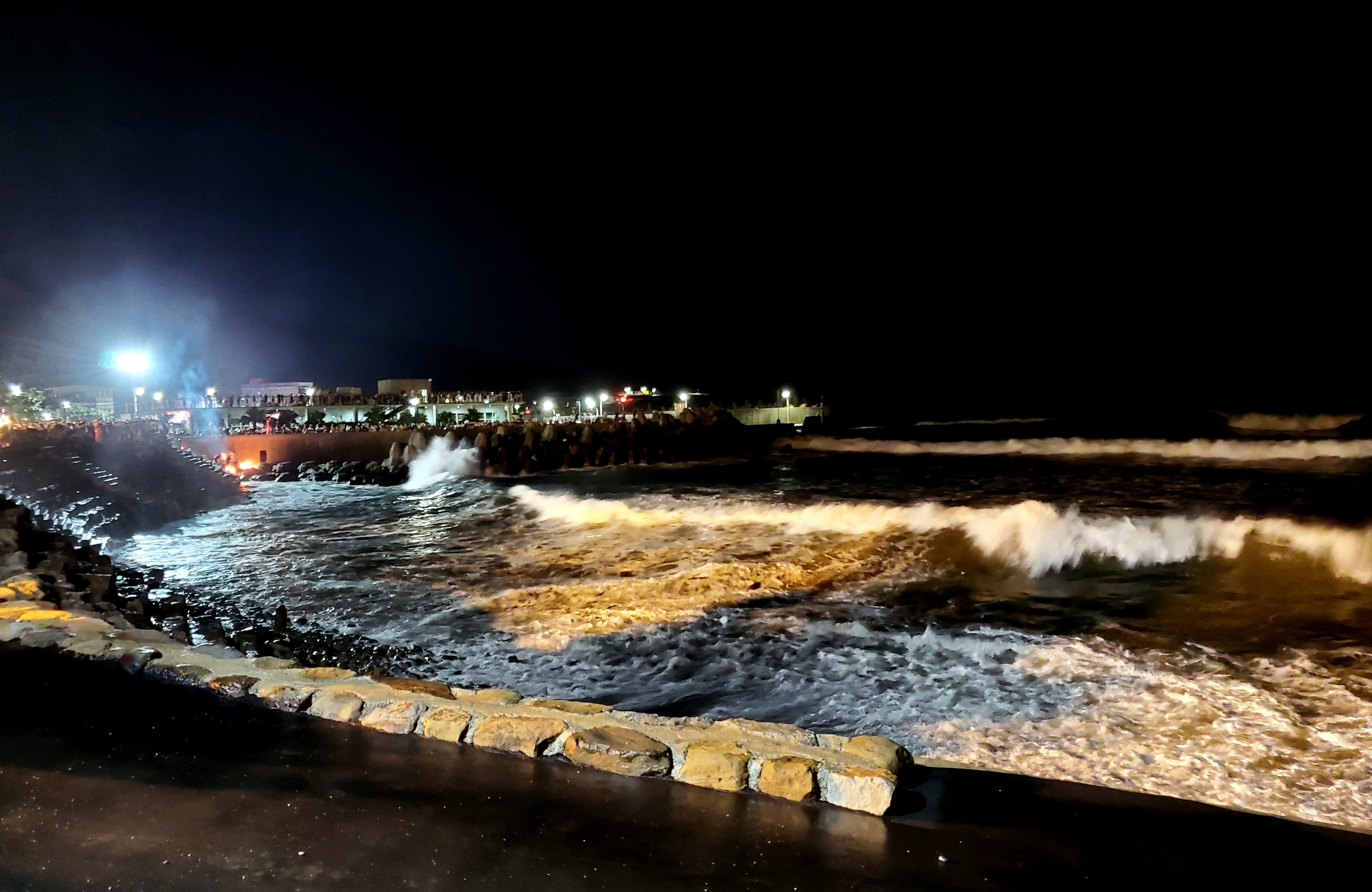


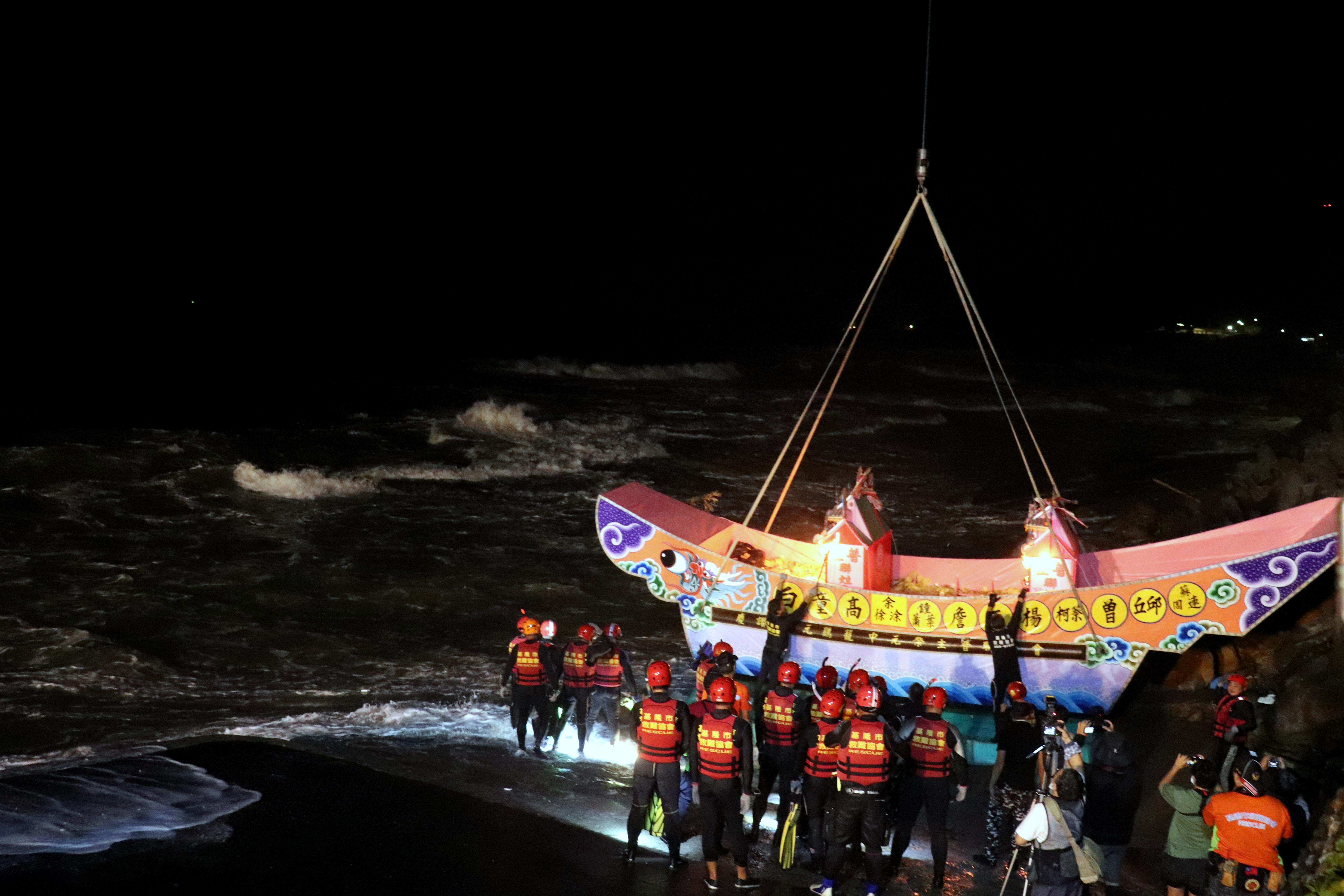

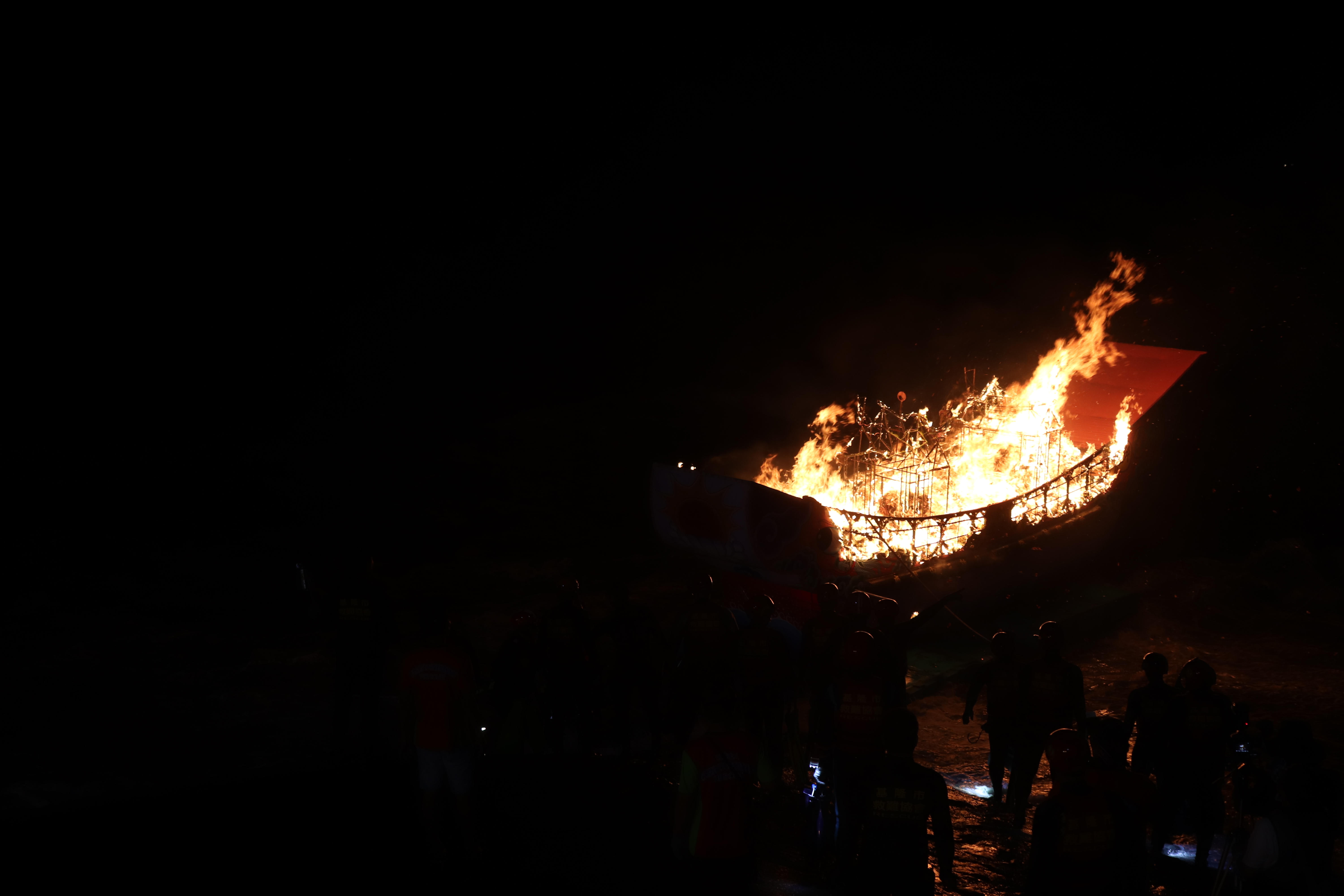
Each lantern, emblazoned with the name of each Keelung clan, were carried down the slope by a group of its members, who were wearing color-coded uniforms and sashes, then passed onto the lantern launchers, kitted out in helmets and life jackets. The dazzling display was set to fireworks. Fistfuls of money were hurled into the air, raining on the water like confetti.
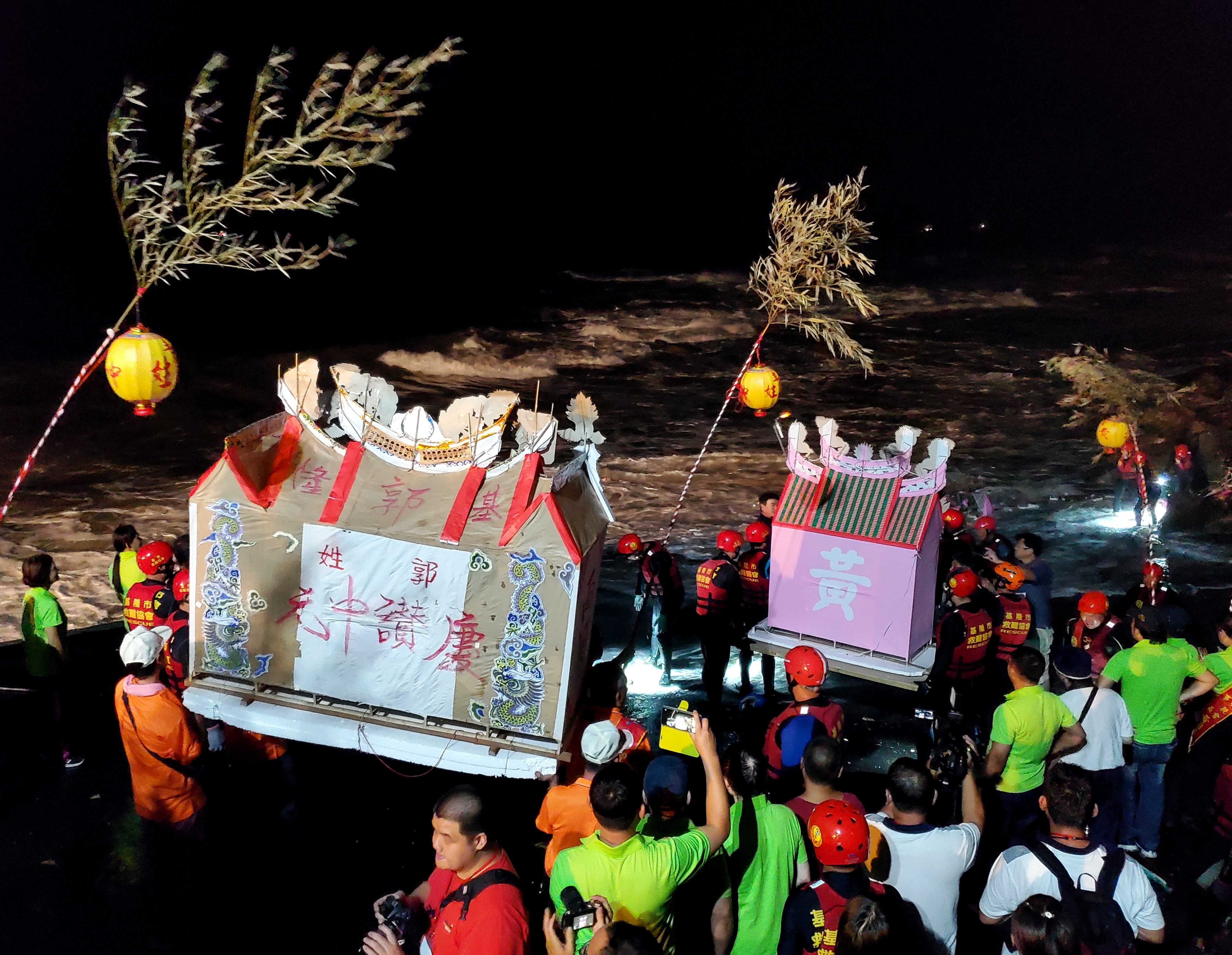

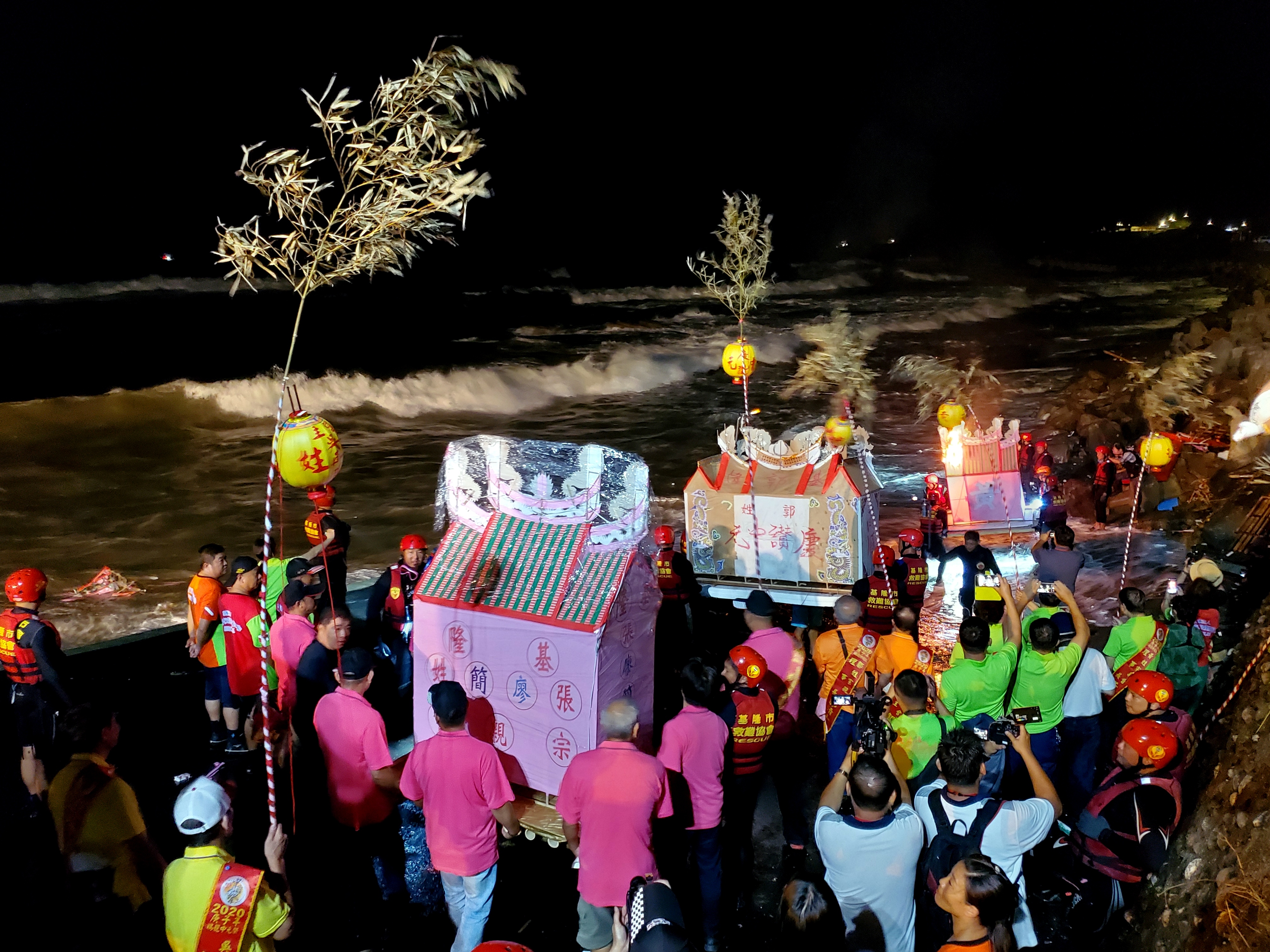



They say that the farther your lantern floats, the better your luck will be the next year.
Sources:
https://international.thenewslens.com/article/103633
https://www.taiwannews.com.tw/en/news/3990308
https://www.taiwangods.com/html/landscape_en/1_0011.aspx?i=1
https://www.mrslinskitchen.com/august2012-hungry-ghost-festival-newsletter.html
http://library.taiwanschoolnet.org/cyberfair2011/klpark100/page_3_1.htm

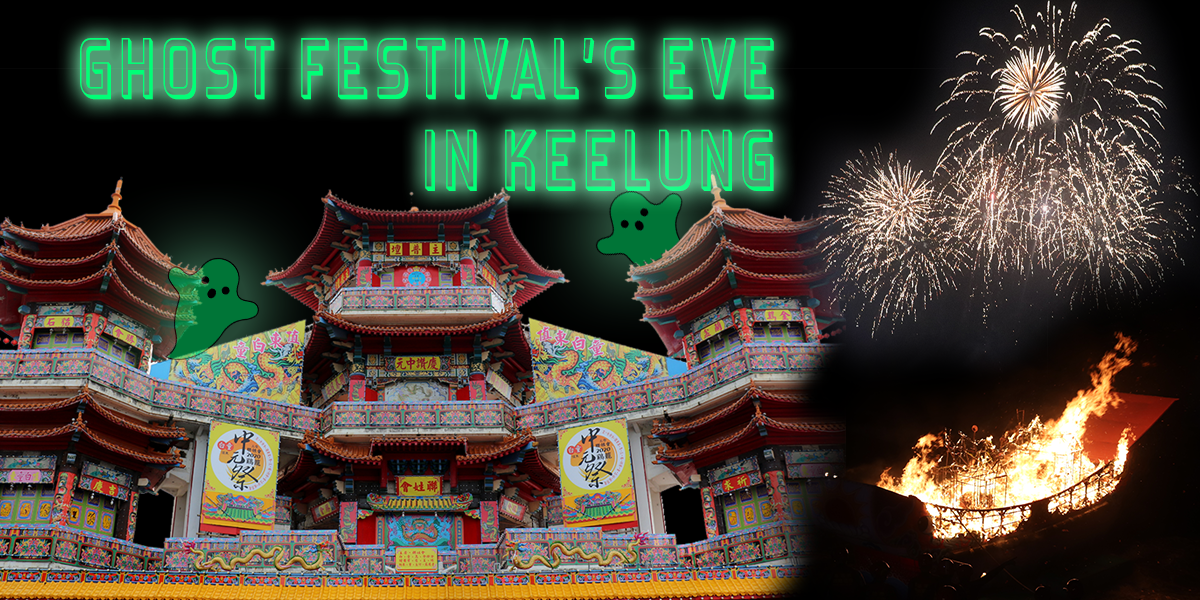
Leave a comment